What Do Bees Eat? 6 Typical Foods
-
Jana Blagojevic
- Last updated:
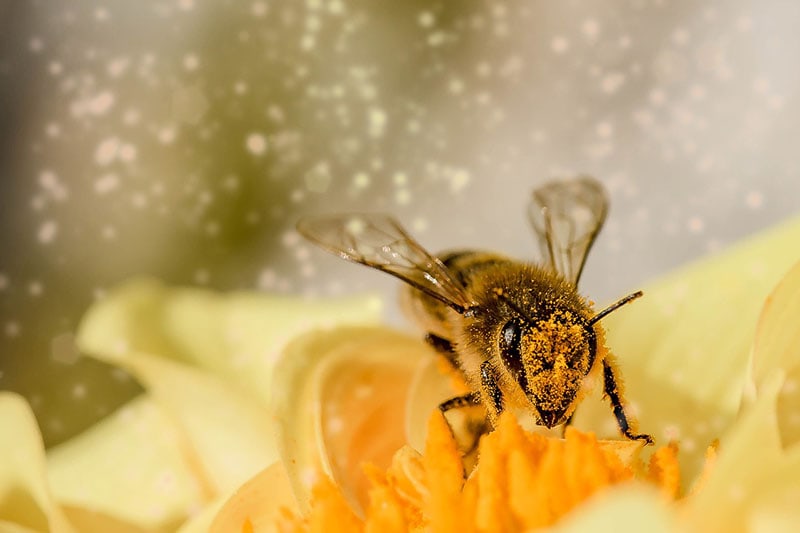
Bees are amazing creatures that collect pollen and nectar and make several highly useful and beneficial products. While bees usually collect pollen and nectar, they eat various foods, primarily feeding on their creations. Bees are incredibly diligent, and the primary purpose is to create an environment suitable for living and growing young bees and larvae. Not all bees consume the same food. Instead, their purpose in the hive determines which foods they will eat.
To learn more about what bees eat and why, read the article below.
The 6 Foods Bees Eat
1. Pollen
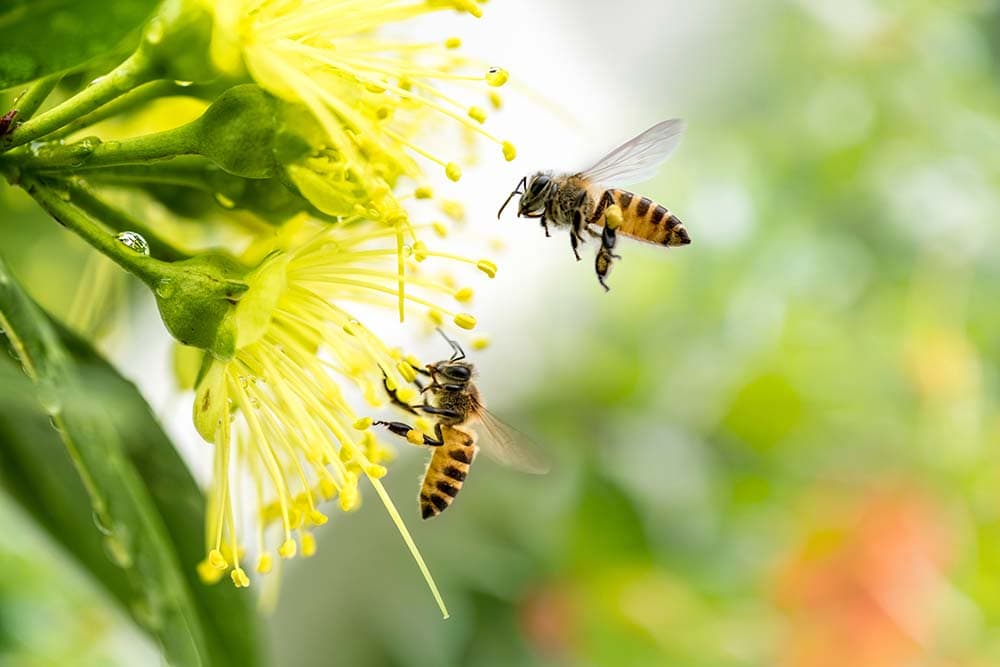
| Definition: | A yellow powdery substance produced by seed plants |
| Fed to: | Larvae, young bees |
Pollen is a powdery-like substance that bees collect from various flowers. Bees collect the pollen, take it back to their hive, and use it for making honey. While the primary use of pollen is to create honey, many larvae and young bees feed on it too. Adult worker bees do not rely on pollen as their food source since they don’t have the enzymes necessary to digest it.
The most common plants that provide the bees with this important food source are maple, oak, elm, lavender, daisies, jasmine, and others. Since bees are primary pollinators in nature, they are essential in spreading pollen and the new growth of fruits and vegetables.
Benefits: Pollen has many beneficial factors for bees since it is their primary source of protein. Pollen also helps the bees maintain an optimal water balance in their diet.
2. Nectar
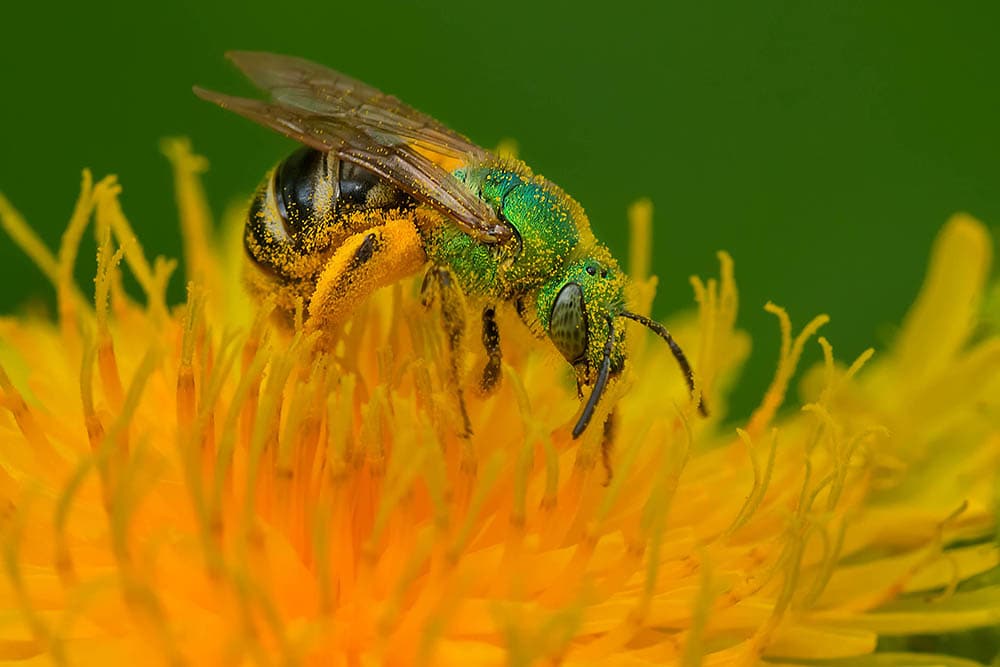
| Definition: | A sugary fluid that flowers secrete to attract pollinators |
| Fed to: | All adult bees |
Most bees will depend on nectar as their primary dietary choice. Bees that feed on nectar are known as “nectarivorous.” The cycle will begin with the worker bees collecting nectar from flowers, drinking it, storing it, and taking it back to the hive. The bees store nectar in their crops, which are processed by various bacteria. They deposit the processed nectar into the hive cell, where water will evaporate, and the bee colony will begin manufacturing honey. Bees consume nectar from flowers such as wisteria, rosemary, basil, lavender, sea holly, and other flowering plants.
Benefits: Nectar has many nutritional values for bees and other nectarivorous animals. It has high levels of vitamins, oils, and sugars and contains many additional beneficial nutrients.
3. Beebread
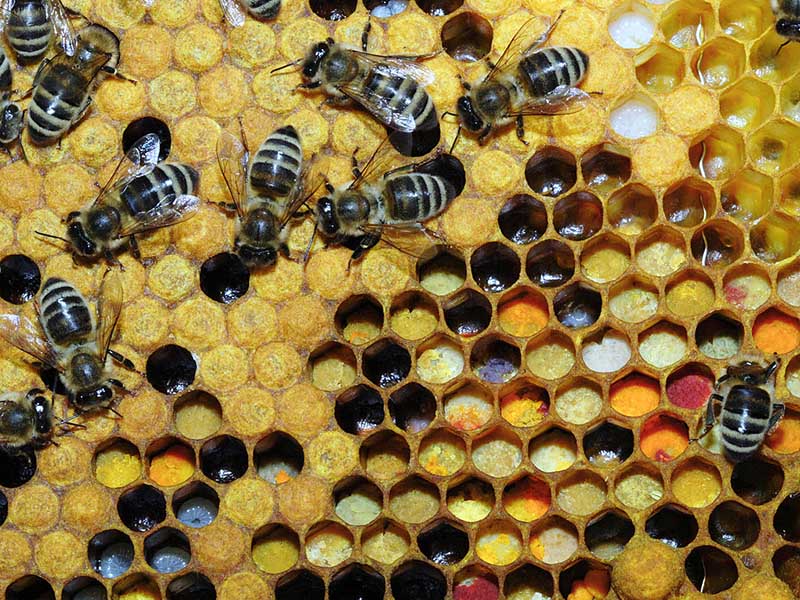
| Definition: | A mixture of pollen, nectar, honey, and bee secretions |
| Fed to: | Larvae, young worker bees, and drones |
Beebread is another bee product made by mixing pollen, nectar, and honey and processing it with their saliva. Beebread is mainly used to feed the honey bee larvae, and newly formed worker bees must continue consuming it. The bees store the beebread in the cells, where they leave it to ferment for at least 21 days. When young worker bees continue eating beebread, they will establish the glands necessary for producing food for the honey bee queen.
Benefits: Beebread contains proteins, sugars, vitamins, minerals, and fatty acids—all very beneficial for the honey bee.
4. Honey
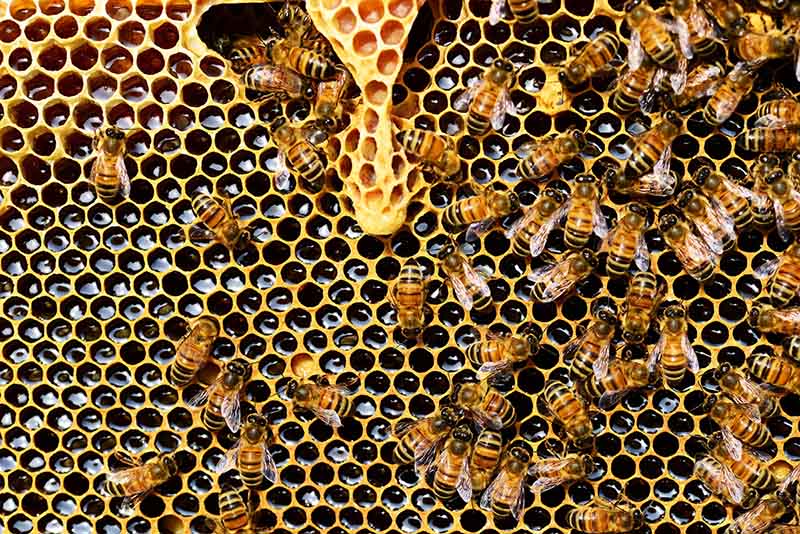
| Definition: | A product made when honey bees collect nectar, regurgitate it, and leave it to dehydrate |
| Fed to: | Drones, worker honey bees |
All bees that are capable of producing honey consume the honey they make. Once the bees collect the nectar from the flowers, they store it and use it later for making honey. Honey is consumed mainly by male drones, whose only purpose is to mate and propagate the species, after which they die. The drones stay inside the honeycomb, eating honey, resting, and never performing any labor work.
Honey is also consumed by the diligent worker bees that need to refuel after foraging. Another use of honey in the colony is for creating beeswax, a crucial substance that some bees use for constructing combs or other structures.
Benefits: Honey is an excellent energy source for most bees, especially working bees. Honey has high levels of carbohydrates, which are sugars responsible for providing the bees with enough energy. Honey is also rich in amino acids, vitamins, and minerals.
5. Royal Jelly
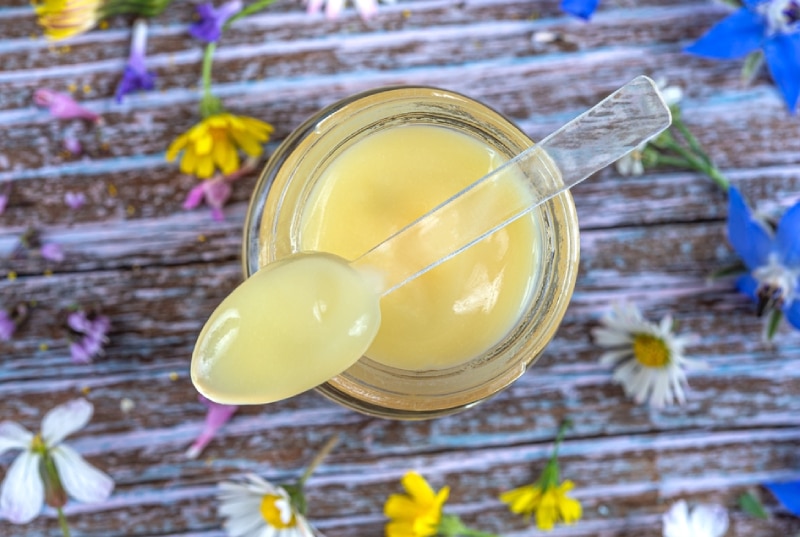
| Definition: | Jelly-like glandular secretions of worker bees |
| Fed to: | Larvae, queen honey bees |
Each young worker bee has a pair of long glands on the sides of their heads, called the hypopharyngeal glands. Royal jelly is a glandular secretion from worker bees. During the first 3 days of a larvae’s life, all larvae are fed with jelly with low pollen levels. This jelly provides them with all the nutrients they need for growth. Later on, depending on the larvae’s future, they are fed different types of food. Only the queen honey bees are fed with royal jelly throughout their entire life. This royal jelly provides the queen bee with a much longer life span than worker females and improves fertility.
Benefits: Royal jelly has many nutritional values for larvae, especially developing queen bee larvae. It contains a substance crucial to the growth and vitality of queen bees—bee defensin-1.
6. Sugar Syrup
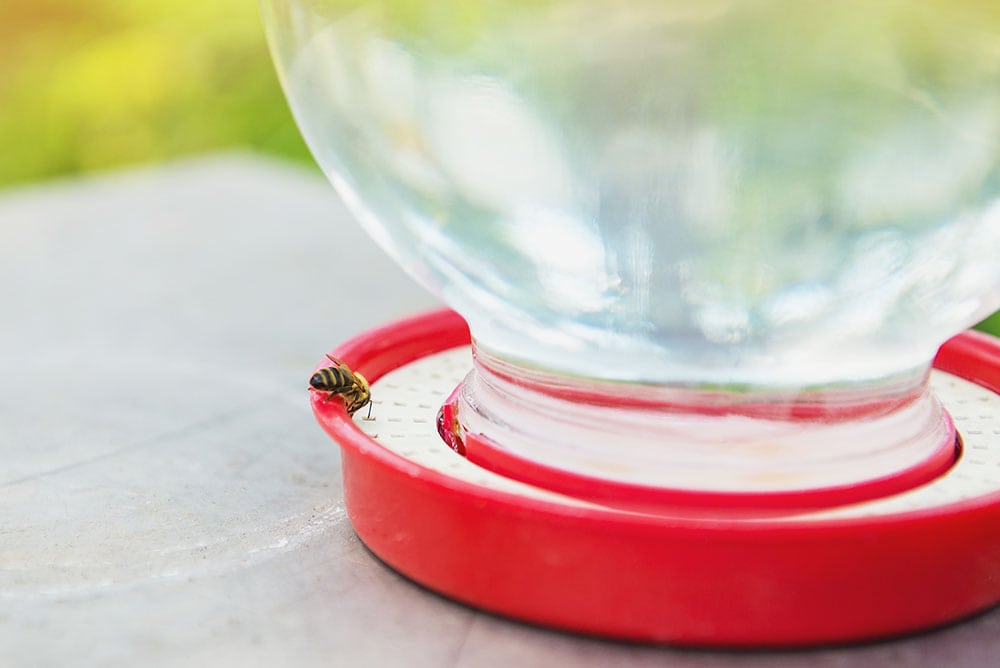
| Definition: | Sugar and water mixture used to nourish honey bees throughout winter |
| Fed to: | All adult honey bees |
Sugar syrup is a man-made mixture used as a supplement food to help honey bees survive the winter. The mixture is made in a 1:2 proportion, mixing two cups of water with one pound of sugar. The sugar syrup mixture is used primarily when not enough honey is left hive’s honey stores. This mixture is a critical ingredient that every beekeeper has to use to prevent their bees from starving in the winter. This simple mixture is made by dissolving the sugar in warm water.
Benefits: Using sugar syrup for bees has multiple benefits. Besides providing them with a food source during winter, it also improves the wax production necessary for comb building.
Conclusion
Bees create honey, beebread, and royal jelly, and consume these or give them to their young. Each food serves a different purpose in the hive and provides the bees with different nutrients and benefits. After learning about bees’ fascinating habits, we will hopefully learn to appreciate them more.
Featured Image Credit: Myriams-Fotos, Pixabay
Contents
